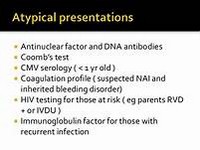
MENOPAUSE
FOODS THAT HEAL
FOODS TO LIMIT
WHO’S AFFECTED
Doctors define menopause as the point when a woman has gone 12 months without a monthly menstrual period
The process is a result of a progressive decline in levels of the hormone estrogen
The beginning of this time of change is referred to as perimenopause, while the period after menopause is called postmenopause
Although menopause used to be viewed as the beginning of old age, a majority of women today in developed countries can expect to live more than a third of their lives after menopause
It is a biological process, not a medical illness
During menopause, fluctuations in estrogen levels can cause symptoms like hot flashes, night sweats, insomnia, vaginal dryness, difficulty concentrating, and weight gain
Some women experience few or no symptoms of menopause, while others experience severe symptoms that cause them extreme discomfort
Menopause can also affect a woman’s risk of developing certain diseases
Before menopause, a woman’s hormones protect her from developing heart disease, but with the onset of menopause that protection is lost
By about 55 years of age, women die of heart disease at approximately the same rate as men
In addition, the gradual loss of bone mass that most women experience from the age of 30 onward is drastically accelerated at menopause
This bone thinning, or osteoporosis, increases the risk of fractures, which can lead to disability and pain
QUICK TIP:
Eat ground flaxseed a day Grind 1 to 2 Tbsp (15 to 30 mL) seeds and add to cereal, yogurt, or oatmealFlaxseed contains omega-3 fatty acids that support heart health and provide lignans
To treat milder symptoms, and to avoid development of chronic disease, women are encouraged to adopt a healthy lifestyle and to try other approaches, which can include dietary change, exercise, and herbal remedies
Nutrition Connection
A healthy diet can help ease the symptoms of menopause and reduce the risk of chronic diseaseHere are some helpful dietary strategies: Eat foods known to reduce menopausal symptoms
Follow a diet high in whole grains, fruits, and vegetables, and low in saturated fats
It will provide you with plenty of fiber, vitamins, minerals, and bioflavonoids—all important for long-term health and to help minimize menopausal symptoms
High-fiber foods such as flaxseed also contain lignans, a phytoestrogen that helps reduce hot flashes
Watch out for trigger foods
There are foods that can worsen symptoms like hot flashes, insomnia, and mood swings
Some common culprits are coffee, tea, chocolate, colas, alcohol, and spicy foods
Include soy foods
Studies have shown that soy foods can help ease hot flashes
Soy foods contain a type of phytoestrogen called isoflavones, which have a weak estrogenic effect in the body
Soy foods include tofu, soybeans, soy beverages, soy nuts, and soy protein
While soy foods are safe enough, the safety and efficacy of isoflavone supplements have not been demonstrated
Vitamin E may help
For some women, vitamin E, found in nuts, seeds, vegetable oils, green leafy vegetables, like spinach and fortified and enriched cereals, helps tame mild hot flashes
Talk to your doctor about supplements; more than 400 mg daily is not recommended
Beyond the Diet
Some lifestyle adjustments can help you deal more easily with menopauseHere are some recommendations: Exercise regularly
Regular exercise may help minimize mood swings and hot flashes
At least 30 minutes of exercise four to five times a week is recommended
Learn relaxation techniques
Deep breathing, guided imagery, and yoga can all help relieve menopausal symptoms
Consider herbs or medication
Although there have not been large clinical studies to establish efficacy for herbal remedies, you can try some of the more popular ones: black cohosh, which has been shown to help decrease depression, irritability, and insomnia; chasteberry, which helps manage fluid retention, hot flashes, and anxiety; and St
John’s wort, which may help manage mild to moderate depression
Medications may also offer relief from symptoms
Importance of well balance diet




